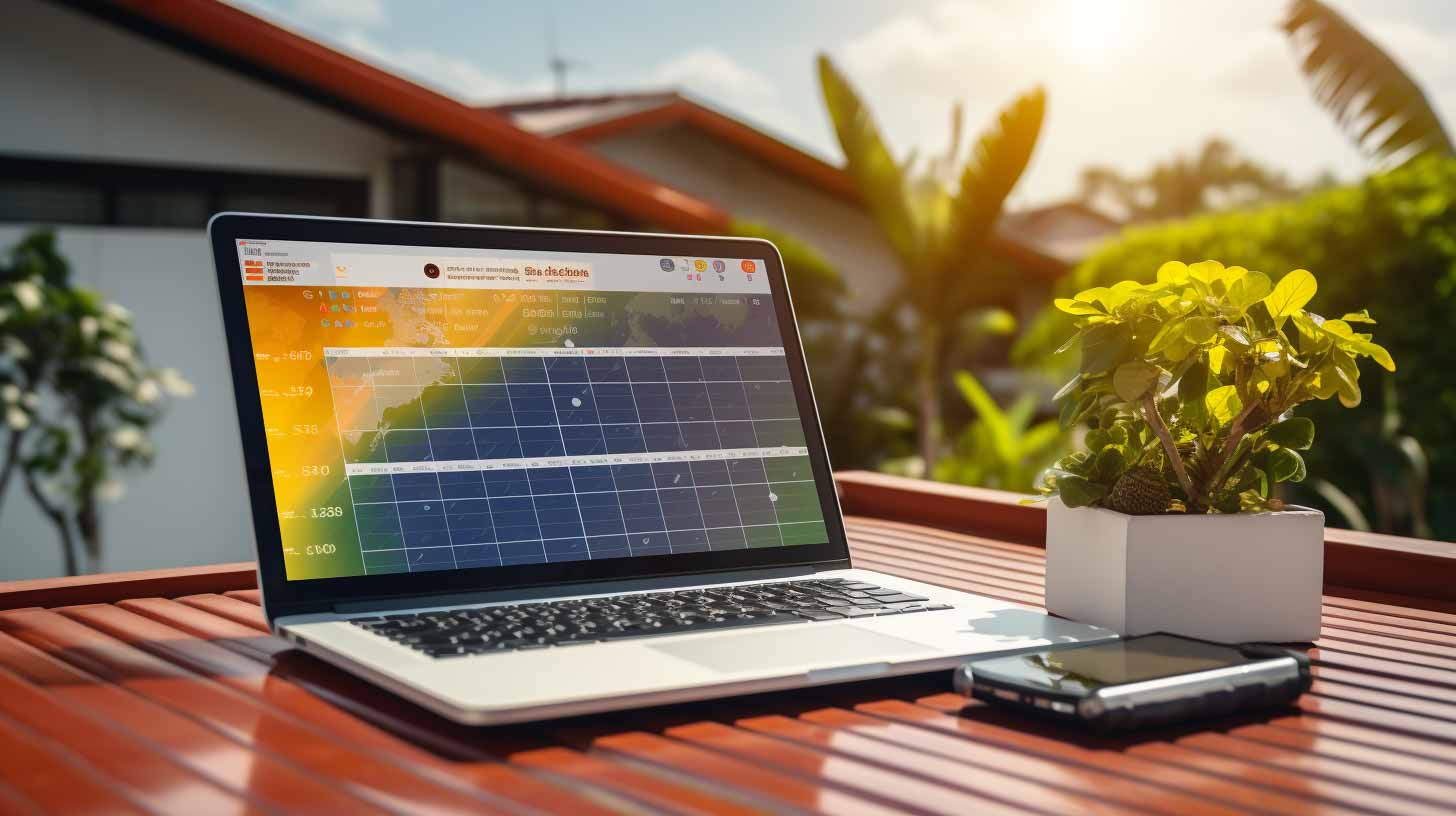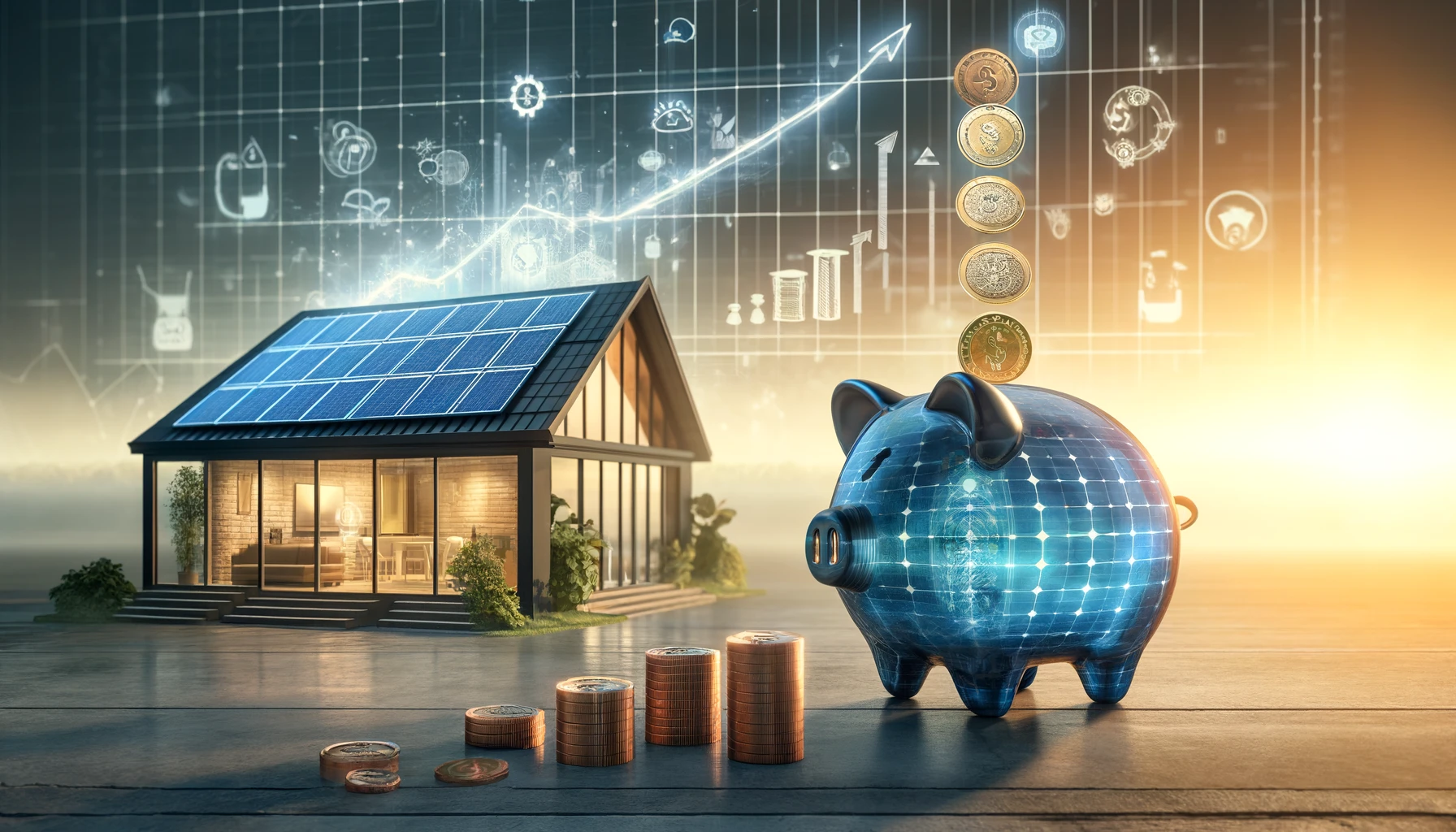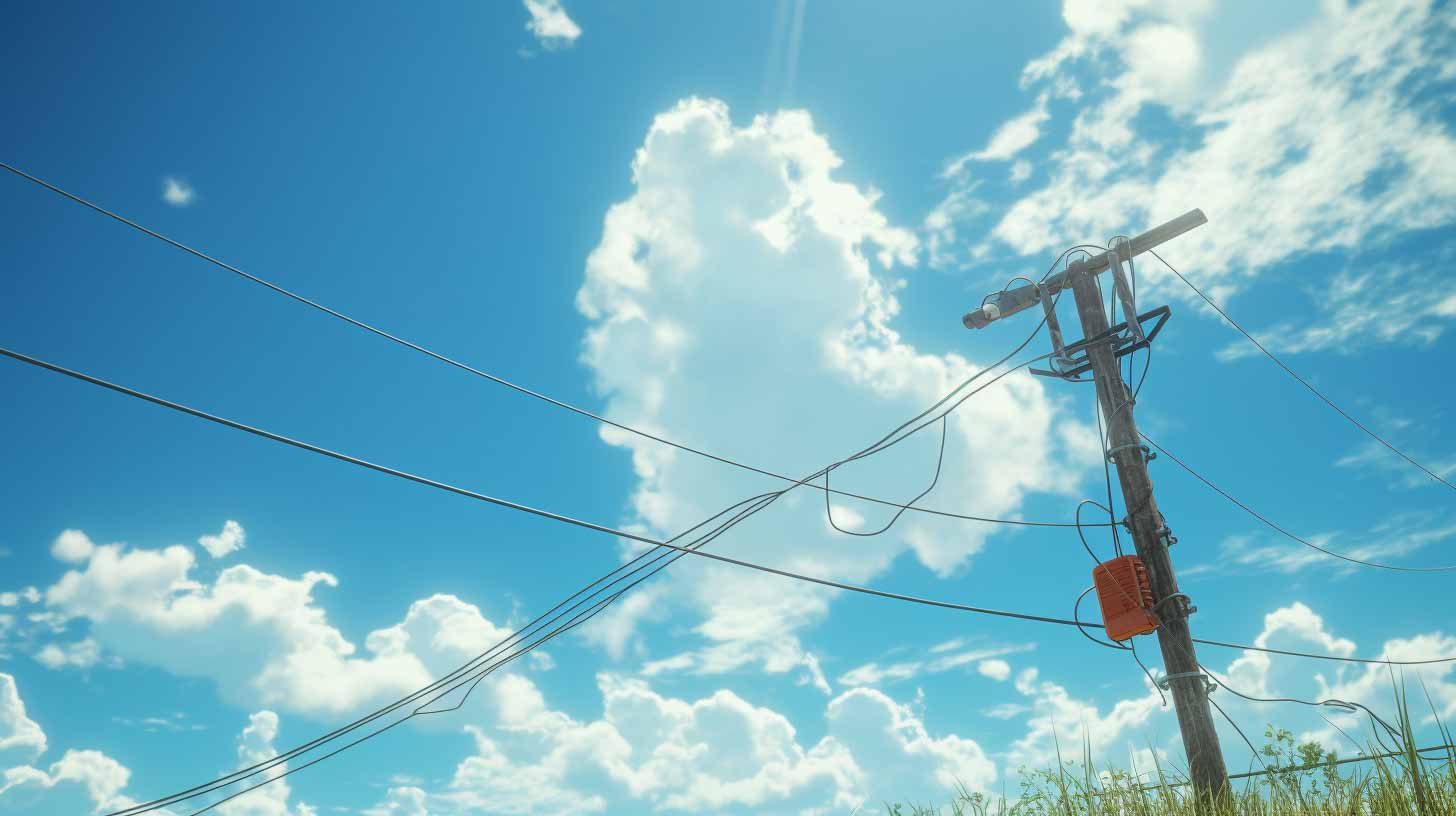You’ve made the smart move to solar energy, but how do you ensure your system works efficiently? Understanding your solar output is crucial to maximising its benefits.
This guide will walk you through the basics of solar energy production and teach you how to monitor your system’s performance effectively.
You’ll learn about:
- Installing necessary equipment
- Tracking your energy output
- Maintaining optimal performance
We’ll delve into the details that might seem daunting at first glance, but don’t worry; we’ve covered it all in simple, easy-to-understand language.
So, let’s roll up our sleeves and make the most of your green investment!
Understand the Basics of Solar Energy Production
Congrats on going solar! Now, it’s time to understand how your system converts sunlight into electricity for your home. It’s imperative to grasp the basics of solar energy production to comprehend your system’s performance and efficiency fully. Understanding terms like ‘Solar panel orientation’ and ‘Photovoltaic cell basics’ will help optimise your system’s energy output.
Solar panel orientation
Solar panel orientation is a critical factor in maximising the amount of sunlight that hits your panels. The direction and angle at which your panels are installed can significantly impact their performance. For example, in Australia, north-facing panels tend to receive more sunlight throughout the day, increasing productivity.
If your roof is east-to-west facing instead, the solar panels will usually be divided between both sides, and the make-up will depend on your energy consumption behaviour. For example, if you use more energy in the mornings, you may have more panels on the eastern side. Conversely, if you use more energy in the afternoons, you may have more panels on the western side.
Here at Lamora Energy, we undertake a comprehensive analysis of your roofing layout to your specific homes energy production will be maximised.
Photovoltaic cell basics
Solar panels consist of multiple photovoltaic (PV) cells linked together. These PV cells convert sunlight into electricity through a process known as the photovoltaic effect. When sunlight strikes these cells, they absorb photons from it. This absorption excites electrons within the cell, creating an electric field across layers, causing electricity to flow. When designing your solar system, try to maximise the sunlight your solar panels will be exposed to.
Remember this: comprehension leads to control! By understanding these concepts related to solar energy production, you get a clearer picture of whether your system is performing optimally or if adjustments need to be made for enhanced efficiency and better results without relying solely on service providers or installers for information or assistance!
Install the Necessary Monitoring Equipment
Ready to keep tabs on your renewable power source? Start by installing the necessary monitoring equipment. This process allows you to monitor your solar system’s energy production efficiently, offering real-time insights into its performance.
The first step in this procedure is to understand that there are two types of equipment: hardware and software. The hardware, usually a device known as a data logger or meter, collects information from your solar panels. This information is then sent to the monitoring software installed on your computer or smartphone. Various monitoring software options are available in the market, each with unique features and benefits. However, most inverters come with their own. If you’ve had your system installed by Lamora Energy, this will already have been included in your setup.
Once everything’s set up correctly, you can view details about power output levels, overall energy production, environmental impact savings, and more at any time through an easy-to-navigate interface. Depending on the software, you may also get alerts if there’s a sudden drop in energy production due to issues like panel damage or shading.
Remember that keeping track of how well your solar system is performing isn’t just about collecting data; it’s about understanding what that data means to make informed decisions about maintaining optimal efficiency for sustainable living.
Track Your Solar System’s Energy Output
Keeping tabs on the power your solar system generates can be a game-changer in managing your home’s energy efficiency. Regularly tracking your solar system’s energy output isn’t just about seeing how much it produces, but also about understanding output fluctuations and optimising performance.
Use your software to examine the data collected by your monitoring equipment, as it will provide real-time insights into the energy production of your solar system, allowing you to gauge its effectiveness accurately.
You’ll want to pay close attention to daily and seasonal variations in output. Solar panels generate less energy on cloudy days or during winter months when daylight hours are shorter, so don’t panic if you notice some fluctuations. It’s normal for there to be some variation based on weather conditions and time of year.
Additionally, sudden drops in power generation could indicate issues with panel performance or that you’re experiencing over-voltage. If you observe any unexpected changes in output over an extended period, it might be worth getting your system checked out by a professional.
Moreover, you should compare the actual yield of your system with its predicted performance. This could help identify any potential problems early on and ensure that you’re getting the most from your investment.
Many people fall into the trap of using their energy bills to monitor performance. The problem with this approach is that a) you’re often noticing an issue much later, whereby earlier intervention could have saved you money, and b) your energy bill is a record of your grid consumption and solar feed-in (aka the solar energy you didn’t use), and neither is an indicator of how much total energy your system is producing.
Monitoring and analysing these figures is not merely about keeping score; it’s about maximising your solar installation’s efficiency and longevity while reducing unnecessary energy bill costs.
So make sure to diligently track the pulse of electricity feed that courses through those sun-soaked panels because every kilowatt-hour counts for sustainable living and energy savings!
Maintain Your Solar System for Optimal Performance
Don’t forget that proper maintenance is key to ensuring your panels perform at their best. A well-maintained solar system can provide you with optimal performance and maximise your energy production. This involves regular inspections, cleaning, and potential system upgrades.
Dust, dirt, and bird droppings can accumulate on the surface of your solar panels over time. These contaminants can block sunlight from reaching the cells within the panel, reducing energy production. Regular cleaning ensures that maximum sunlight reaches the photovoltaic cells in your panels for efficient conversion to electricity. A soft brush and mild detergent will help remove grime without damaging the panel surface. However, we would recommend having a professional clean your panels at least once a year, preferably just before you head into the peak sunlight months.
As technology advances, newer models of inverters or charge controllers may become available and could be more efficient than what was initially installed with your solar system. Upgrading these components might enhance the overall efficiency of your system by better harnessing and converting solar energy into usable power for your home. Speaking to an expert can help you to assess whether an upgrade makes financial sense.
Routine checks are also crucial in maintaining an optimally functioning solar system. Check regularly for loose connections, corrosion around terminals, or wear-and-tear on wires that could affect current flow.
You should ideally conduct a comprehensive maintenance check every six months to ensure all components are working efficiently – this includes inspecting mounting hardware for any loose screws or bolts that may have loosened over time due to weather conditions.
Maintaining an optimally performing solar system isn’t just about maximising energy production today; it’s about securing consistent productivity long-term. So keep up with those cleanings, and don’t shy away from potential upgrades – they’re worth it for ongoing energy savings!
Related article: 3 Reasons Why You’re Not Seeing The Savings from Your Home Solar System







